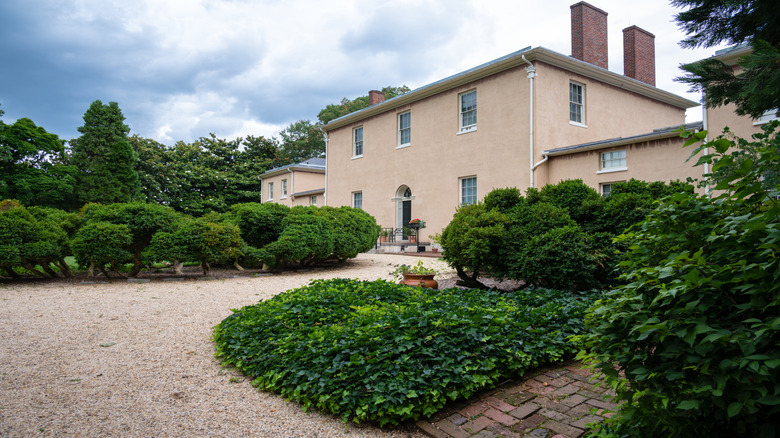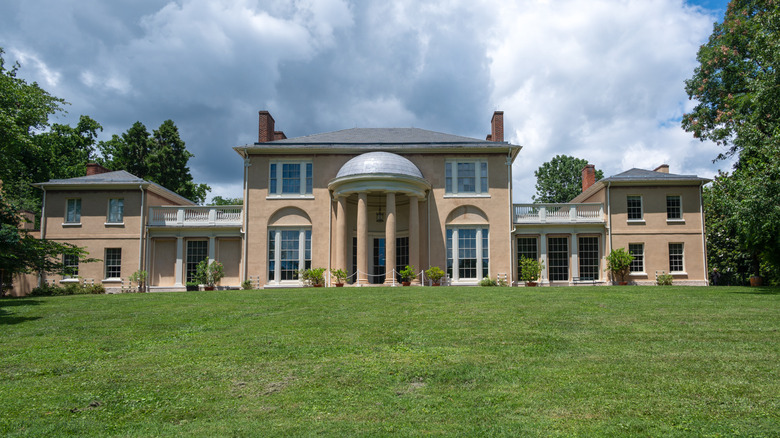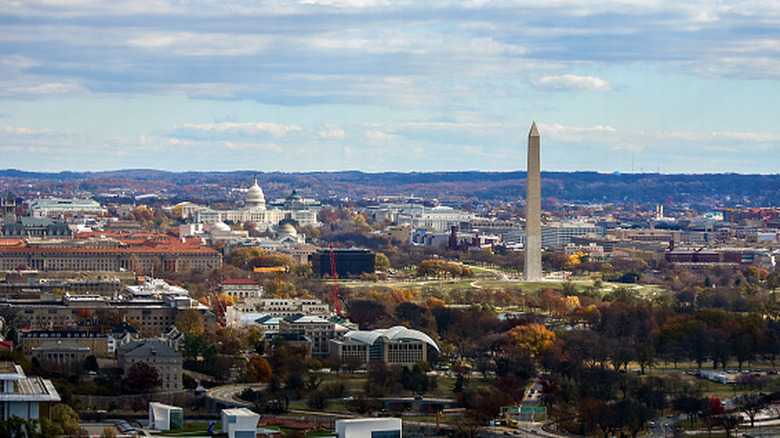This Historic Mansion In Washington, D.C. Features Blooming Gardens, Fine Art, And A Dark History
As one of the best cities in America for solo travelers, Washington, D.C., is an icon of the East Coast with more than enough activities to keep you busy. From exploring the largest natural history collection in the world to marveling at the titular statue at the Lincoln Memorial, you'll never run out of things to do — including for free. And while the Smithsonian museums and the incredible Library of Congress usually take the spotlight, some gems in the US capital tend to remain hidden. But we don't like gatekeeping these attractions, which is why you should add Tudor Place to your list. This Federal-style mansion is five-and-a-half acres of gardens, marble flooring, and fine art — but there's a painful side to its history, tied to slavery.
The original owners of Tudor Place, Thomas and Martha Peter (Martha Washington's granddaughter and George Washington's step-granddaughter), were notorious slave owners who abused their power to take advantage of Black people. According to current records of Tudor Place, 109 people suffered due to the Peters. From dehumanizing and selling people to breaking families apart, it was difficult to escape the exploitation as they worked and lived on the premises. Even after the District of Columbia Emancipation Act was signed in 1862, enslaved people were not given reparations for their labor and expertise.
Now owned by a private charitable organization, Tudor Place aims to educate visitors about the injustices that took place at the hands of the Peters. At the same time, it also preserves period architecture, and offers extensive exhibits of jewelry, furniture, ceramics, textiles, and more objects. What's more, Tudor Place is home to the second-largest Washington collection after Mount Vernon, George Washington's former residence and plantation.
What to expect inside Tudor Place, Washington, D.C.
Since it's located in Georgetown, you can easily get to Tudor Place by taking the D2, D6, or G2 buses. Guided tours last up to an hour, so plan accordingly. And even though you can take a virtual 3D tour of the historic estate, nothing beats seeing it in person. As you explore each room of the two-story mansion, you'll notice a large variety of furniture styles, from French and English to German and Asian. Several parlor and pier tables feature Grecian touches, matching dressers boast French design, and work desks have traditional cabinet-making qualities typically associated with Georgetown.
With over 2,200 works of fine art, Tudor Place is sprinkled with paintings by Joseph Wright, Edward Savage, William Thornton, and more. You'll also come across Paul Wayland Bartlett's sculptures, such as "Poisson" and "General Washington at Valley Forge." Highlights include Walter Robertson's portrait of George Washington, "La Chiminée" by Walter Gay, and "Goodnight" by Bessie Potter Vonnoh. Many visitors will also be fascinated by the costumes on display. There are 1,500 clothing items that not only provide a glimpse into the outfits worn back then, but also the type of materials used, availability, cost, techniques, and the evolution of fashion. Martha Peter's 19th-century Empire-style silk gauze dress is a striking exhibit in the mansion, and its rose-colored shawl completes the look.
Caroline Ogden-Jones and Armistead Peter III were the last owners of Tudor Place, and their costumes and jewelry are also made public. Admire the gorgeous 1930s embroidered wool bathing suit by House of Lanvin, a cloche hat by none other than Hermès, and a spectacular 1920s evening dress with tulle and intricate beadings.
Tudor Place's garden is as wonderful as its interior
Initially, the garden at Tudor Place had both recreational and agricultural purposes. It was only until Armistead Peter III that the garden was made for decorative uses. The oldest species in the garden include Florentine tulips — going back as far as 100 years. Some of the grape varieties and forget-me-nots have also bloomed here for over a century. Landscape-wise, the garden is separated into two sections: the North and South Lawns. The North flaunts European-inspired gardens with ornamental water features and remarkable vistas of kaleidoscopic flora. Here lies the Bowling Green area of the garden — a serene pond, quaint pergola nooks, and unique statues dot this space. Also included are the Boxwood Circle, Dower House, and Box Knot.
Over to the South is the Kitchen Arbor and Gazebo, which dates back to the 1960s. Come springtime, you'll see yellow and white anemones surrounding the entire structure. But this isn't to say that spring is the best time of the year to visit Tudor Place. In January, the estate flourishes with Ozark witch hazels, Lenten roses, winter jasmine, and snowdrops. Summer is the peak season to view magnolias, tickseeds, Asiatic lilies, scarlet bee balms, and purple coneflowers. As for autumn, viburnum leaves turn maroon, American holly fruits emerge with their bright reds, and camellias offer an aromatic fragrance.
Visiting Tudor Place is one of the best activities for adults on vacation in Washington, D.C. Not just because of its architecture — it teaches us an important lesson. You get to learn six generations of not only the Peter family stories, but also the enslaved and free people who worked and lived there.


